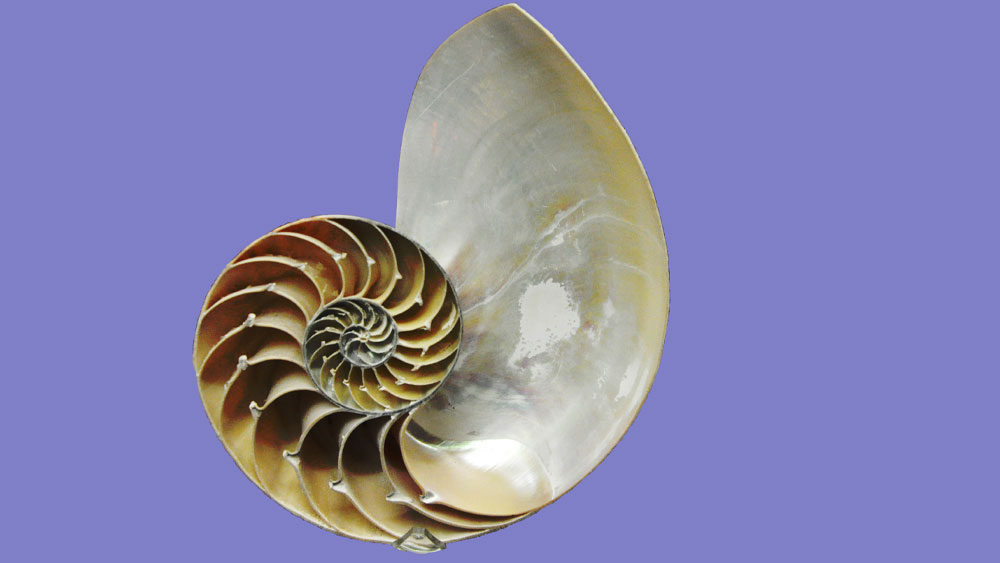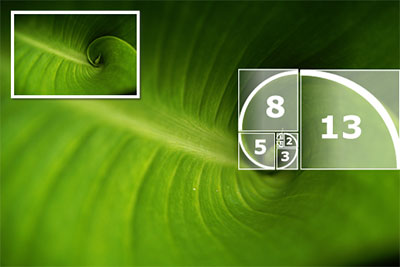
The Golden Numbers
by Jonathan K. Corrado, Ph.D., P. E. | Apr. 25, 2024
Evolutionists theorize that the universe came into being through random means. Fundamentally, randomness lacks symmetry since the very concept of symmetry implies order. Randomness also lacks periodicity, such as events occurring in a cycle or objects in a repeating sequence. Quite simply, randomness lacks any evidence of design. Nature, however, does not display randomness.1 In fact, it exhibits quite the opposite.
In the twelfth century, Italian mathematician Leonardo Fibonacci discovered a fascinating number sequence in which each number is the sum of the previous two numbers (1, 1, 2, 3, 5, 8, 13, 21, 34…). This sequence is revealed in many profound ways across the natural realm.
For instance, in geometry a “golden rectangle” is a rectangle whose side lengths are represented by the “golden ratio,” which is derived from the Fibonacci sequence.2 Needless to say, this rectangle has some interesting mathematical properties that are also pleasing to the human eye. As such, it can be seen in historical structures like the Parthenon, the Great Pyramid of Giza, and the United Nations building. It’s also used for credit cards, playing cards, and even the light switch in your bedroom. Additionally, many artists utilize the golden rectangle to give their art a quality called dynamic symmetry, which adds elements of growth, movement, power, animation, and life.

The golden rectangle taken one step further produces the “golden spiral,” a logarithmic spiral whose growth component reflects the golden ratio.2 It’s the only spiral that does not change shape as it grows. This spiral is well-represented in nature via the chambered nautilus shell, a hurricane spiral, a ram’s horn, the tail of a seahorse, the DNA molecule, galaxies, and the cochlea of the human ear, to name a few examples.
In botany, phyllotaxis is the arrangement of leaves on a plant stem. The rotational angle from leaf to leaf represents a fraction of a full rotation around the stem. Alternating elm leaves, for instance, have an angle of 1/2 of a full rotation. In beech and hazel, the angle is 1/3; in oak and apricot, 2/5; in sunflower, poplar, and pear, 3/8; and in willow and almond, 5/13.3,4 As demonstrated, each numerator and denominator consists of a Fibonacci number and its successor.5 In fact, you’ll never find a leaf arrangement that does not reflect the Fibonacci sequence—this specific configuration maximizes the leaves’ exposure to sunlight and air without shading from the others.
So, why is the Fibonacci sequence exhibited in phyllotaxis, the rotation of our galaxy, the DNA in our cells, and countless other places? It’s because the same Designer created them all in perfect unison and harmony. As Jeremiah 32:17 proclaims, “Ah, Lord GOD! Behold, You have made the heavens and the earth by Your great power and outstretched arm. There is nothing too hard for You.”
References
- See Corrado, J. 2023. Non-Repeatable Repeatability: Finding Order in Disorder. Creation Science Update. Posted to ICR.org October 23, 2023, accessed March 3, 2024.
- Livio, M. 2002. The Golden Ratio: The Story of Phi, the World’s Most Astonishing Number. New York: Broadway Books.
- Coxeter, H. S. M. 1961. Introduction to Geometry. New York: John Wiley & Sons.
- Willson, F. 2002. Shapes, Numbers, Patterns, And The Divine Proportion In God's Creation. Acts & Facts. 31 (12).
- Pennybacker, M. and A. C. Newell. 2013. Phyllotaxis, Pushed Pattern-Forming Fronts, and Optimal Packing. Physical Review Letters. 110 (24).
Stage image: Cross section of a chambered nautilus shell displaying the golden spiral
Stage image credit: Copyright © Philippe Alès. Used in accordance with federal copyright (fair use doctrine) law. Usage by ICR does not imply endorsement of copyright holder.
* Dr. Corrado earned a Ph.D. in Systems Engineering from Colorado State University and a Th.M. from Liberty University. He is a freelance contributor to ICR’s Creation Science Update, works in the defense and nuclear industries, and is a senior officer in the U.S. Naval Reserve.
Scientists Question Foundational Big Bang Assumption

In April 2024, some of the world’s leading cosmologists convened at the Royal Society in London to question the cosmological principle—the assumption that the universe is the same everywhere and in every direction.1,2 This is a highly significant development since the cosmological principle is a foundational assumption of the Big Bang model for the universe’s origin.
More...Moroccan Dinosaurs in Marine Rocks, Too

Two recent papers by paleontologist Nicholas Longrich and his colleagues describe some unexpected findings in phosphate mines of northern Morocco.1,2 Most surprisingly, they found a pair of short-armed carnivorous dinosaurs mixed in with fish, sharks, and marine turtles in the same layer.1 Their second discovery was a 26-foot-long, previously unknown mosasaur with “bladelike” teeth that was also found in the same formation as the dinosaurs and marine creatures.2 Why are dinosaurs and mosasaurs in the same marine rocks?
More...Bees Master Complex Tasks Through Social Interaction

Bees are simply incredible.1,2 These little furry fliers challenge the very foundation of Darwinism in many diverse ways.
Bees have been delighting creationists for generations. These intelligent creatures can distinguish different humans from each other, as individuals, retaining memory of who is whom. Bees have remarkable math skills and communication abilities, including their use of “waggle dance” to inform other bees about where to find food.3
Consider also how
More...The Tail of Man’s Supposed Ancestors

Although it has been known for decades and despite insistence to the contrary from the evolutionary community, man—Homo sapiens—has never had a tail.1–3
More...More Articles
- When Day Meets Night—A Total Success!
- The Sun and Moon—Designed for Eclipses
- Let ICR Help You Prepare for the Great American Solar Eclipse!
- Total Eclipse on April 8th
- April 2024 ICR Wallpaper
- Creation's Easter Message
- ICR Veteran Don Barber Retires
- Plant Receptors Are Designed to Control Immunity and Development
- A Subsurface Ocean on Mimas?
- In Theaters March 20 & 21: The Ark and the Darkness
- Enigmatic Fossil Plants
- Surprisingly Colorful Fossil Snail Shells
- March 2024 ICR Wallpaper
- Mystery of Moths' Warning Sound



